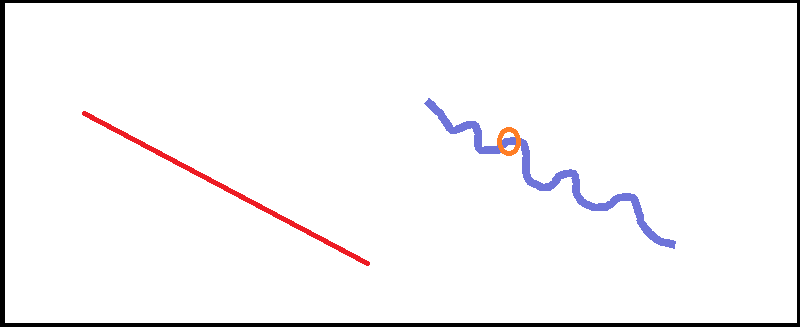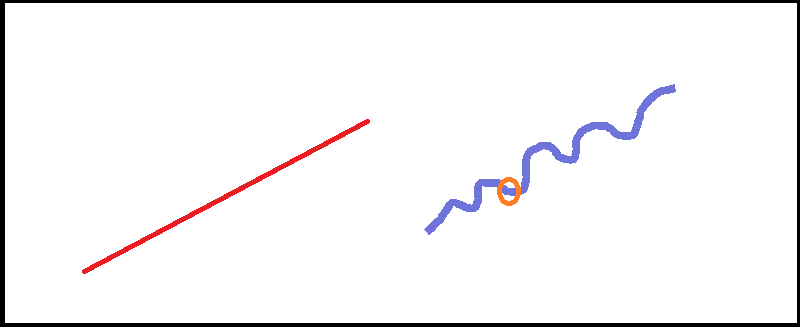Taking in a deep, anxiety filled breath, she stepped onto the cool, metal plate in her bathroom. A second passed. Then a few more. Finally a number appeared between her feet, and it was a number she didn’t want to see.
What the hell? That can’t be right. I’m fatter today? But I did everything I was supposed to. I ate cleaner, went to the gym, and I’m even working with a freaking personal trainer!
That dreadful moment on the scale passed, and she tried to shrug off the frustration as she headed out the door for school. The drive wasn’t her typical one though, because today, she also drove through a shame storm in her mind.
God this sucks. I’ve been trying so hard but it looks like I’m just going to fail again. No surprise there. Why did I think this time would be different?

After arriving at school, the rest of the day followed a predictable pattern—getting her classroom set for her third grade students, teaching several classes—until the bell rang so she could go to the teacher’s lounge to eat her packed lunch.
Do I really need all of this food? These chips have way too much sodium. I shouldn’t eat them. They’re bad. I’ll just eat half my Caesar Salad.
As the school day came to a close, she felt it: her stomach grumbled; she was hungry. Clutching her stomach, she attempted to ignore how hungry she felt and how frustrated she still was.
Brrng! Brrng!
Thank goodness, the final bell, it’s time for the gym. I can burn some extra calories and get rid of this stomach.
Instead of simply burning a few calories that day though, she would learn a valuable lesson about weight loss.
Frustration And Fat Loss
She parked her car, grabbed her gym bag from the trunk, and walked toward the door.
Before she could reach the handle though, the door swung open and her trainer, Gracie, said, “Hey Hazel, how are you doing today?”
“I’m okay,” Hazel said.
She strolled into the locker room, changed into her gym clothes and, without uttering a word, started to warm up.
“Hazel, is everything okay?” Gracie asked. “I may be wrong, but it seems like something is bothering you. Want to step into the office and chat about it?”
Glancing towards the floor, Hazel said, “Yeah, I guess we can.”
The consultation office they walked into wasn’t like most offices, for the floor was not carpet or hardwood, but covered by turf that was green as grass. It smelled of lavender from the cleaner that was used each night. And while it was a small office, it was the place where big changes in other people’s lives began.
Hazel and Gracie plopped down onto two leather, swiveling chairs that were in front of a giant whiteboard, which had small scratches on it from the hundreds of lessons that had been taught on its surface. The base of it held a blue, red, and orange marker.
Gracie started the conversation by asking Hazel what was going on, and the flood gates opened.

“I’m so frustrated.” Hazel folded her arms and slumped down in the leather chair. “I just don’t get it. A few days ago my weight was moving in the right direction. I loved it! Then this morning, it said I’m fatter. I just don’t get it. It sucks.”
“That is frustrating, Hazel.” Gracie looked at Hazel’s eyes, which were staring at the floor. “I know how hard you’ve been working towards your goal of losing 20 pounds.”
“I have.” Hazel sat up in her chair. “I thought things were going well.”
“How would you say your progress has been going the last few weeks?” Gracie asked.
“Okay, I guess,” Hazel said. “I’ve lost five pounds so far.”
“That’s great!” Gracie said.
“I guess, but my weight should keep going down,” Hazel said. “Not up.”
“It sounds like you want the weight to keep consistently coming off,” Gracie said.
“Of course I do, that’s what is supposed to happen,” Hazel said.
“I understand that,” Gracie said. “Well, if it’s okay with you, can I say something that I think would be helpful.”
“Sure,” Hazel said, “that would be great.”
A Straight Line And A Squiggly Line
Gracie stood from her chair and walked up to the whiteboard. Covering it temporarily, so that Hazel couldn’t see what she was writing, Gracie drew two lines and a small circle. She stepped aside so Hazel could see the whiteboard.

“I realize I have the artistic ability of a third grader.” Gracie smiled as she pointed towards both lines. “But these two lines show how progress with weight loss works. Let me explain.
The red line on the left is our expectation of weight loss. We hope that, if we do everything right, then we’ll lose weight consistently over time.
It doesn’t work that way unfortunately.
The blue line on the right shows how weight loss actually works. Progress isn’t a straight line. It’s a squiggly line. Our bodyweight can fluctuate a lot day to day. Some days we weigh less and some days more. That’s normal.”
“That makes sense I guess,” Hazel said. “ But it just sucks so much seeing the number go up.”
“I get that, Hazel, and it does.” Gracie pointed to the blue line. “Knowing that progress works more like this blue line doesn’t mean you have to love seeing a higher number on the scale. But it helps to accept and expect that your weight will be higher at times.”
“Okay, I see what you’re saying,” Hazel said. “By the way, what is that orange circle you drew?”
“I’m glad you asked,” Gracie said. “That’s where you are today. On the upward part of the curve and, if you keep moving along that curve, if you keep working on the things you’re working on, the number will start going down again.”
From Frustration To Acceptance
In the months following that whiteboard lesson, Hazel still felt frustrated at times.
Ah! The number is higher today. Damnit.
She took a deep, calming breath.
That’s okay though. It was lower the last couple days. This is normal. It happens.
Hazel has different expectations now. Instead of expecting weight loss to unfold like the red line, she knows it’s more like the blue line. If she keeps riding the curve—if she accepts that her weight might be higher than she’d like at times, and that she can still work on her eating skills—then things will work out.

And things did work out for Hazel. She not only found more self-compassion for herself in general, and specifically when stepping on the scale, but she was able to hit her twenty pound weight loss goal.
The feelings of frustration and negative thoughts are still there from time to time. But, she now thinks of them like the weather: it’s not likely every day will be sunny and 75 degrees. It will rain sometimes.
Similarly, she has accepted there will be heavier days, and that there will be lighter days, and she stays focused what she needs to do to live the healthy life she has created.
Progress Isn’t A Straight Line
When it comes to making progress in life, whether that’s with regard to the gym, learning a new skill, or mastering a craft, we often believe that progress happens consistently. That for the amount of effort we put in, we’ll see an equal amount of success in return.
If only life worked that way.
We wish we could start going to the gym and feel stronger every single day; that we could learn to play the guitar and never have a bad session when practicing; or, that we could become a master in our chosen craft.
As with weight loss, progress isn’t a straight line in any area of life; it’s a squiggly line. To show this, let’s take the whiteboard drawing from Hazel’s story and flip it around to reflect how progress towards any worthwhile goal looks.

The red line is our expectation, while the blue line is how it actually works. Some days we feel like we’re on top of the world, and others we feel like we fell in a pile of dog poop.
Some days in the gym we feel as strong as Pinocchio—barely able to do our usual warm up weight–while other days we feel like Popeye after cracking open a few cans of spinach.
Some days we feel like we’ve never picked up a guitar, never strummed a chord, while other days make us think we’ll be the next Jimi Hendrix.
What matters in each of these examples—gaining strength, learning a skill—is consistency over time. What helps us sustain that consistency is understanding how progress really works.
That, while it would be nice to ride towards our goals with no issues, there may be a bump or two in the road.
So, the next time you’re struggling with your weight loss goal—or making progress with any other goal or skill for that matter—think back to the two whiteboard lines.
Keep in mind that progress isn’t a straight line; it’s a squiggly line.
Things may not feel as though they are going well, but it’s quite possible you’re on a part of the squiggly blue line you don’t want to be. That’s okay.
If you keep being consistent, keep moving along that curve, then you’ll reach the destination you’ve been working towards all along. It just won’t be as smooth of a ride as you initially thought it would be, and that’s okay.
